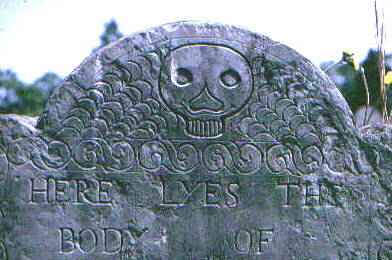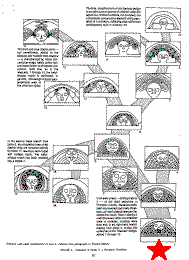More detailed studies of localized gravestone developments over time show a variety of intermediate stages in stylistic changes, the creativity of individual stone cutters, and more rapid and radical changes within one of the three main design types of death's head, cherub, or urn and willow. For example, gravestones from the cemetery in Plympton County, Massachusetts, dating from the early to late 1700s, show remarkable variations of the early death's head motif into a so-called "Medusa" head design and another trend of multiple halos.
The gravestone below is an example of Stone 1 from the Plympton cemetery, as depicted in Figure 3 of the study by James Deetz and Edwin Dethlefsen entitled Death's Head, Cherub, Urn and Willow.
|

